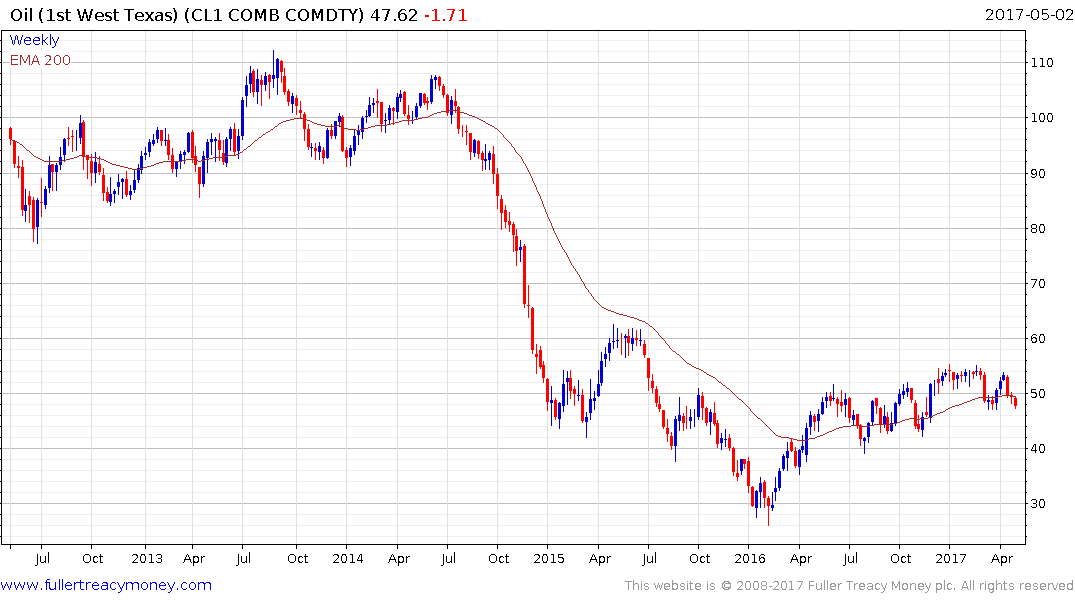Musings from the Oil Patch May 2nd 2017
Thanks to a subscriber for this edition of Allen Brooks’ ever interesting report for PPHB. Here is a section:
As automobiles transition from being completely under the control of a human driver to being totally controlled by machines and computers, several things can happen. If cars can operate without having accidents, highway speeds can be increased, which could reduce vehicle fuel-efficiency, boosting fuel consumption. Fully-autonomous driving will also enable classes of the population currently unable to utilize vehicles, adding more vehicle miles traveled to the nation’s transportation system and increasing fuel consumption. Those classes of people include non-drivers, along with the elderly, disabled and young people. A study by Carnegie Mellon University estimates that this expansion of the driving population could increase vehicle miles traveled by 14%, or adding 295 billion miles of driving annually. That will mean more fuel consumed, regardless of how fuel-efficient the vehicles are that these classes of people utilize. A rough calculation based on vehicles with 30 miles per gallon ratings, means about 675,000 barrels a day of additional gasoline, or approximately a 7% increase on today’s gasoline consumption. Fully-autonomous driving suggests more vehicle use, more miles driven and more fuel consumed. The offset is if fully-autonomous vehicles dominate the growing car/ride-sharing segment of the transportation sector, which could act to reduce fuel consumption.
Whether the vehicles of the future are ICE-powered or derive their power from some other fuel source will be influenced by the outcomes of the other two broad trends. For example, if we become a nation of car-sharers, there will be fewer vehicles needed, vehicle miles traveled might decline, although they just as easily could increase. A fully-autonomous vehicle provides the possibility of having a greater impact on fuel consumption than human-driven vehicles. First, cars that don’t have accidents can be made from lighter materials that facilitates more EVs since greater battery weight will be offset by lighter vehicle bodies and frames. That could help EVs overcome some of the range-anxiety challenges for many potential buyers. It could help accelerate the electrification of the automobile fleet, which would have a significant negative impact on vehicle fuel consumption. On the other hand, if ICE powered vehicles remain the popular option, fuel consumption might not be as impacted as in an EV-favored scenario. With fully-autonomous vehicles offering the potential for increased vehicle use, fuel consumption is likely to increase.
Here is a link to the full report.
The Jevons Paradox suggests that if the price of a vital commodity falls use will increase so that the greater efficiency achieved through advancing technology is absorbed by demand growth. In fact the only commodity I can think of that has been completely obviated from popular use is whale oil. In every other case uses might have changed and costs might collapse but we end up using more of it.
Therefore I tend to think that if we do in fact have a future of autonomous vehicles it will result in much more miles driven and even more vehicles on the road. That will be enabled by the vehicles travelling and negotiating their routes much more efficiently.

Meanwhile these points represent medium-term considerations for the oil market while onshore US unconventional supply now represents the global marginal cost of supply. That continues to influence prices with WTI now testing its lows near $47 which also represent the higher reaction lows evident since early last year.
Back to top


